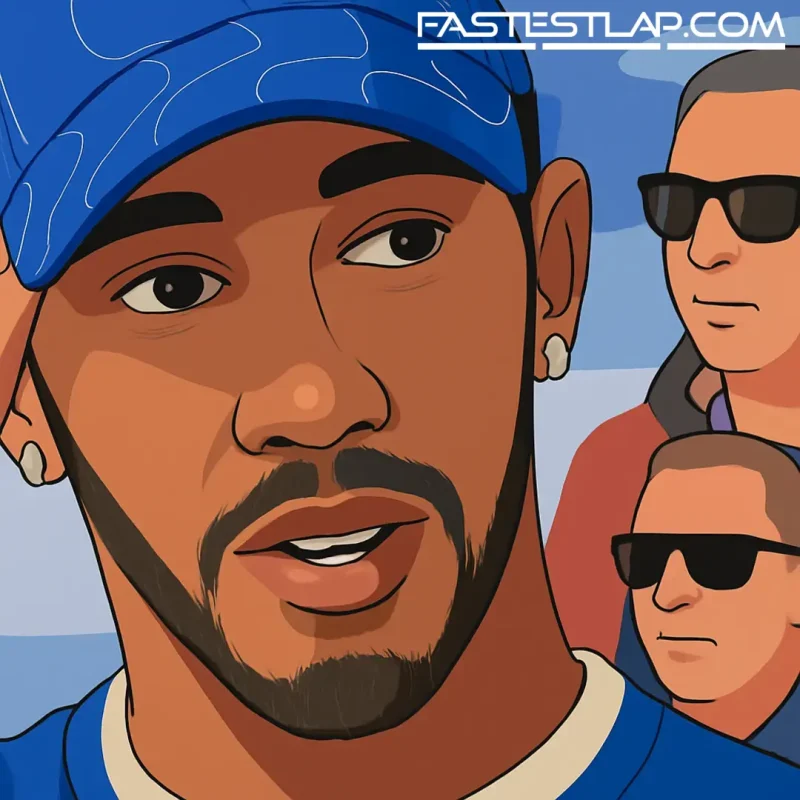Martin Brundle reckons Lewis Hamilton has finally stopped fighting the Ferrari and started driving it.
After a summer that had looked worryingly flat, Hamilton arrived at Monza lighter on the radio and heavier on the throttle. He took a five-place grid penalty into Ferrari’s home race, started 10th, and carved his way to sixth with familiar precision. Not headline-grabbing, no — but the kind of afternoon that hints at a mind reset rather than another mid-season spiral.
Brundle, watching it all from close quarters for Sky, picked up on something different. He called it a “mindset adjustment,” the sense that Hamilton’s no longer burning energy raging against what the SF-25 isn’t, and instead leaning into what it is. There was even that telling Brundle line: Hamilton “looked happier.” Given where this partnership has been through the first half of 2025, that alone felt significant.
There’s also the teammate reality. Charles Leclerc has been the benchmark at Ferrari — over a lap, in traffic, in the wet and the dry. If Hamilton needed any reminder of the size of the task, Zandvoort gave it. He was quick enough to live with Leclerc’s pace before an error ended his race, then came to Monza and, even from 10th, stayed in Leclerc’s postcode all Sunday. It’s not a victory, but it’s a foothold.
Brundle’s read is that Hamilton has accepted two truths. One: Leclerc is properly, relentlessly fast in red. Two: this Ferrari isn’t a race-winning tool every weekend. Acceptance can be liberating in a sport that often rewards execution over expectation. When Hamilton’s not chasing a car that isn’t there, the racecraft we remember shows up — the late braker, the patient operator, the opportunist.
Hamilton himself hasn’t sugar-coated the learning curve. He admitted in Monza the Ferrari still asks him to drive in a way that feels “alien,” and that he’s effectively arriving at each circuit having to bolt on a new technique. That matters. So much of his prime at Mercedes was spent iterating on a machine built around his instincts; here, he’s tuning himself to the car, not the other way around. The pay-off is that across a race distance he’s finding time as the laps unspool and confidence creeps in.
It also helps that the noise has softened. The radio angst, the body language — both were more at ease at Monza. Ferrari needed that as much as he did. The tifosi want a Ferrari fighting at the front; right now, what they have is a Ferrari pairing that can run strongly when the window is open, but too often spends Sundays managing compromises. Until the package takes a step, the job is to turn solid Saturdays into opportunistic Sundays with clean starts, sharp strategy, and no freebies to the midfield. Hamilton’s Monza ticked most of those boxes.
The teammate dynamic is the line to watch from here. Leclerc’s raw speed has never been the question; Hamilton’s ceiling in this car still might be. If the seven-time champion’s new headspace sticks, the gap should trend down in qualifying and the balance of power on long runs will continue to narrow. That’s where his racecraft still buys points — and, eventually, podiums — when the car isn’t the class of the field.
None of this changes Ferrari’s bigger picture overnight. Expectations were sky high after last season’s late surge, and the title talk evaporated early in 2025. But Monza hinted at something steadier: a Hamilton more in tune with his tools, a garage less tense, a team less reactive. If Ferrari find a little more front-end bite and Hamilton keeps meeting the car halfway, there’s a very real chance the weekend rhythm we saw in Italy becomes the template rather than the exception.
For now, Brundle’s right about the mood music. This looked like Hamilton choosing to make the best of what he’s got — and looking a bit more like himself while doing it. In a year where the margins are thin and the windows narrow, that could be worth more than it sounds.




